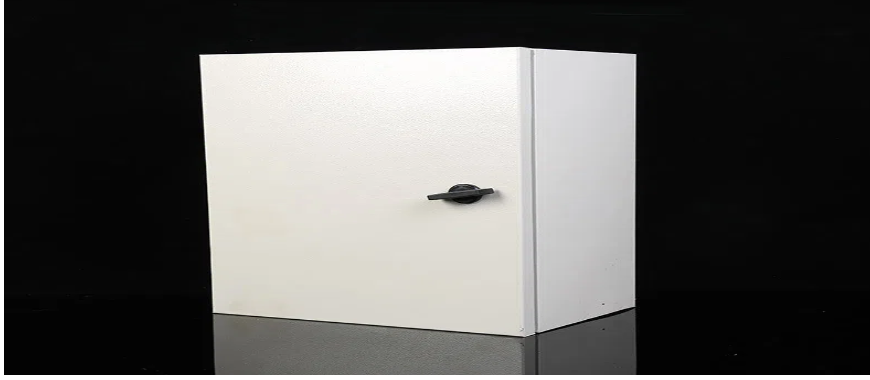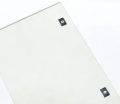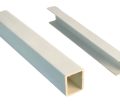
Fiberglass epoxy boxes are versatile and durable solutions for various storage and project needs. These boxes are constructed using fiberglass cloth and resin, providing strength and resistance to environmental factors. Common applications include audio equipment housing, outdoor storage, and custom cabinetry. The lightweight nature of fiberglass makes these boxes easy to handle, while their waterproof properties ensure contents remain safe from moisture. Additionally, fiberglass epoxy boxes can be customized in size and shape to meet specific requirements. This adaptability makes them popular among DIY enthusiasts and professionals alike. Whether for personal or commercial use, a fiberglass epoxy box offers reliable performance and lasting quality.
What is a Fiberglass Epoxy Box?
A fiberglass epoxy box is a robust storage solution made from fiberglass and epoxy resin. This combination results in a strong, lightweight structure that can withstand various environmental conditions. Fiberglass epoxy boxes are typically used in applications requiring durability and moisture resistance.
Key Characteristics
Durability: Resistant to impacts and abrasions.
Waterproof: Protects contents from moisture damage.
Lightweight: Easy to transport and install.
Customizable: Available in various sizes and shapes to suit different needs.
Benefits of Using Fiberglass Epoxy for Construction
Choosing fiberglass epoxy boxes offers several advantages for both DIY projects and professional applications. Here are some benefits to consider:
Long-lasting Performance: These boxes maintain their integrity over time.
Cost-Effective: Reduced maintenance costs due to their durability.
Versatile Applications: Suitable for various uses, including outdoor and indoor settings.
Aesthetic Appeal: Can be painted or finished for a polished look.
Factors to Consider
When selecting a fiberglass epoxy box for your project, keep the following factors in mind:
Intended Use: Different applications may require specific features.
Size Requirements: Ensure the box fits your storage needs.
Environmental Conditions: Consider exposure to elements like moisture and UV rays.
Case Studies and Examples
Research has shown that fiberglass epoxy boxes perform well in real-world conditions. For instance:
Marine Applications: Used for waterproof storage solutions on boats.
Audio Equipment: Commonly utilized in custom subwoofer enclosures for enhanced sound quality.
By understanding the definition, key characteristics, and benefits of fiberglass epoxy boxes, you can make informed decisions for your projects.
Fiberglass Box with Ears: Essential Features and Benefits
Fiberglass Epoxy Box DIY
Creating a fiberglass epoxy box is an exciting and rewarding project. This DIY approach allows for customization and creativity. You can design a box that perfectly meets your needs. Below are essential materials and step-by-step instructions for constructing a fiberglass epoxy box.
Materials Needed for a DIY Project
To build a fiberglass epoxy box, gather the following essential materials:
Fiberglass Cloth: Provides structural integrity.
Fiberglass Resin: Used for bonding the cloth.
Hardener: Activates the resin for curing.
Mixing Containers: For combining resin and hardener.
Brushes or Rollers: For applying resin to the cloth.
Protective Gear: Gloves, goggles, and a mask for safety.
Cutting Tools: Scissors or a utility knife for shaping materials.
Sandpaper: For smoothing edges and surfaces.
These materials are crucial for successfully constructing a fiberglass epoxy box.
Step-by-Step Instructions
Follow these detailed instructions to create your fiberglass epoxy box:
Design Your Box: Plan the dimensions and shape according to your needs.
Cut the Fiberglass Cloth: Use scissors to cut the cloth into pieces based on your design.
Prepare the Resin: In a mixing container, combine the fiberglass resin and hardener according to the manufacturer’s instructions.
Apply Resin to Cloth: Use brushes or rollers to coat one side of the fiberglass cloth with resin.
Lay the Cloth: Position the resin-coated cloth onto your chosen surface, ensuring a tight fit.
Repeat the Process: Layer additional cloth pieces, applying resin as needed for strength.
Cure the Box: Allow the fiberglass epoxy box to cure completely in a well-ventilated area.
Finish the Surface: Once cured, use sandpaper to smooth any rough edges or surfaces.
By following these steps, you can successfully create a fiberglass epoxy box tailored to your specific requirements. Enjoy the process and take pride in your craftsmanship!
Fiberglass Epoxy Box Kit
A fiberglass epoxy box kit provides all the necessary materials for constructing a high-quality box. These kits are designed to simplify the DIY process. With everything you need in one package, you can create a durable and functional fiberglass epoxy box without extensive planning. Understanding the components of these kits can help you make an informed choice.
Overview of What a Typical Fiberglass Epoxy Box Kit Includes
A typical fiberglass epoxy box kit contains various essential components. Each part plays a critical role in the construction process. Here is what you can expect to find in a standard kit:
Fiberglass Cloth: This material provides the structural integrity of the box. It comes in various weights and weaves, allowing for different strengths.
Fiberglass Resin: This is the adhesive that bonds the fiberglass cloth. It cures hard, forming a solid structure.
Hardener: The hardener activates the resin. Without it, the resin will remain liquid and unusable.
Mixing Tools: Containers and sticks for mixing the resin and hardener are often included. Proper mixing is crucial for achieving the best results.
Application Tools: Brushes or rollers help spread the resin evenly on the fiberglass cloth. This ensures a strong bond.
Protective Gear: Gloves, masks, and goggles protect you during the application process. Safety should always be a priority.
Instructions: Clear, step-by-step instructions guide you through the construction process. Following these instructions is key to success.
By providing these components, a fiberglass epoxy box kit simplifies the construction process for both beginners and experienced users.
Explanation of Different Components
Each component of a fiberglass epoxy box kit contributes to the overall performance and quality of the box. Understanding these materials can enhance your project outcomes.
Fiberglass Cloth: This material is essential for strength. It comes in various types, such as woven and chopped strands. The weight of the cloth affects the box’s final durability.
Fiberglass Resin: This is typically a thermosetting polymer. It cures to a hard finish, providing moisture resistance. Different types of resin are available for specific applications.
Hardener: The choice of hardener can affect curing time and final properties. Slow hardeners allow for longer working times, while fast hardeners speed up the process.
Mixing Tools: Proper mixing ensures the resin and hardener react effectively. Inadequate mixing can lead to a weak bond and surface imperfections.
Application Tools: Using the right application tools helps achieve a smooth and even layer of resin. This improves the box’s overall appearance and performance.
Protective Gear: Safety equipment is crucial when working with resins. Proper gear minimizes exposure to fumes and skin contact.
Instructions: Following clear instructions helps avoid common pitfalls. This can lead to a more successful and satisfying project experience.
A fiberglass epoxy box kit offers convenience and quality for any project. With the right materials, you can create a durable and effective solution for your needs. Understanding the components will help you appreciate their roles in constructing a fiberglass epoxy box.
Innovative Fiberglass Box with Heatsink for Optimal Performance
Specialized Kits: Fiberglass Subwoofer Box Kit
A specialized fiberglass subwoofer box kit provides everything needed to create high-quality audio enclosures. These kits are designed specifically for subwoofer applications, enhancing both sound quality and design. A well-constructed fiberglass subwoofer box can significantly improve the performance of your audio system. Understanding the purpose and assembly process will help you make the most of your kit.
Purpose of a Fiberglass Subwoofer Box
The primary purpose of a fiberglass subwoofer box is to enhance audio performance. This fiberglass epoxy box serves multiple functions that benefit both sound quality and aesthetics. Here are some key benefits:
Improved Sound Quality: A properly designed box minimizes sound distortion. It allows for better bass response and overall audio clarity.
Custom Fit: Fiberglass allows for custom shapes and sizes. This customization ensures a snug fit for specific subwoofer models.
Durability: Fiberglass is resistant to wear and tear. It withstands vibrations without compromising structural integrity.
Lightweight Design: Fiberglass is lighter than many other materials. This feature makes installation easier without sacrificing strength.
Aesthetic Appeal: A fiberglass subwoofer box can be shaped and finished to look visually appealing. This enhances the overall look of your audio setup.
Moisture Resistance: The waterproof properties of fiberglass protect your equipment. This is especially important in humid or outdoor environments.
These benefits make fiberglass subwoofer boxes a popular choice among audio enthusiasts.
How to Assemble a Fiberglass Subwoofer Box Kit
Assembling a fiberglass subwoofer box kit involves a step-by-step process. Following these steps will ensure that you create an effective and durable enclosure for your subwoofer.
Gather Your Materials: Ensure you have all components from the kit. This typically includes fiberglass cloth, resin, and a hardener.
Plan Your Design: Decide on the dimensions of the box. Consider the size of the subwoofer and the space available in your vehicle or room.
Prepare the Workspace: Choose a well-ventilated area for assembly. Lay down protective coverings to prevent resin spills.
Cut the Fiberglass Cloth: Use scissors to cut the cloth according to your planned dimensions. Ensure you have enough pieces for layering.
Mix the Resin: In a mixing container, combine the fiberglass resin with the hardener. Follow the instructions for the correct ratio.
Apply Resin to the Cloth: Use brushes or rollers to coat one side of the fiberglass cloth with the mixed resin. This step ensures a strong bond.
Layer the Cloth: Place the resin-coated cloth onto your base surface. Smooth it out to avoid air bubbles. Repeat this process for additional layers.
Build the Box Structure: Continue layering until you achieve the desired thickness and strength. Ensure all corners and joints are well-covered.
Cure the Fiberglass: Allow the box to cure completely according to the resin instructions. This curing time is essential for durability.
Finish the Surface: Once cured, use sandpaper to smooth out any rough edges. You can also paint or varnish the exterior for added protection and aesthetics.
Install the Subwoofer: Once the box is complete, install your subwoofer securely. Ensure all connections are properly made to avoid issues.
By following these steps, you can successfully assemble a fiberglass subwoofer box kit. The result will be a durable and efficient enclosure that significantly enhances your audio experience. Enjoy the benefits of high-quality sound with your newly constructed fiberglass subwoofer box.
Fiberglass Epoxy Box: The Key Ingredient
Fiberglass resin is a crucial component in constructing a fiberglass epoxy box. This resin acts as the adhesive that bonds the fiberglass cloth together, creating a strong and durable structure. Understanding the role of fiberglass resin is essential for any successful project.
Explanation of Fiberglass Resin and Its Role in Construction
Fiberglass resin serves several important functions in the construction of a fiberglass epoxy box:
Adhesive Properties: The resin binds the fiberglass cloth, ensuring a solid structure.
Curing Process: Once mixed with a hardener, the resin cures to form a rigid, durable surface.
Moisture Resistance: Cured resin provides excellent protection against water damage.
Flexibility in Application: Resin can be easily applied to various shapes and surfaces.
This versatility makes fiberglass resin an ideal choice for a wide range of applications.
Types of Resins Available and Their Specific Uses
Different types of fiberglass resins cater to various needs and applications. Here are some common resin types:
Polyester Resin: This is the most common type used in fiberglass projects. It is cost-effective and cures quickly.
Vinylester Resin: This resin offers better chemical resistance and durability than polyester. It is ideal for harsh environments.
Epoxy Resin: Known for its strong adhesion and excellent moisture resistance, epoxy is perfect for high-performance applications.
Phenolic Resin: Often used for fire-resistant applications, this resin provides high strength and thermal stability.
Selecting the right resin is crucial for achieving the desired performance and longevity of your fiberglass epoxy box.
Tips for Successful Fiberglass Epoxy Box
Completing a fiberglass project requires careful planning and execution. By following best practices, you can ensure a successful outcome with your fiberglass epoxy box.
Best Practices for Working with Fiberglass
Here are some tips to improve your fiberglass working experience:
Prepare Your Workspace: Ensure your area is clean and well-ventilated to prevent dust and fumes from affecting your work.
Wear Protective Gear: Always use gloves, goggles, and a mask. This helps protect against harmful chemicals.
Measure Accurately: Precision is key. Measure all materials carefully to ensure proper fit and structure.
Follow Mixing Instructions: Adhere to the recommended resin-to-hardener ratios. This ensures proper curing and strength.
Apply in Thin Layers: Instead of applying thick layers of resin, use multiple thin layers. This promotes better curing and reduces the risk of air bubbles.
These practices help enhance the quality and durability of your fiberglass epoxy box.
Common Mistakes to Avoid During the Construction Process
Even experienced builders can make mistakes. Here are some common pitfalls to watch out for:
Inadequate Surface Preparation: Failing to clean or sand surfaces can lead to poor adhesion.
Rushing the Curing Process: Avoid using the box before the resin has fully cured. This can weaken the structure.
Ignoring Temperature Guidelines: Resin cures best within specific temperature ranges. Check the recommendations for optimal results.
Overlooking Safety Measures: Neglecting protective gear can result in health issues. Always prioritize safety.
Not Following Instructions: Skipping steps in the instructions can lead to structural weaknesses.
By avoiding these common mistakes, you can achieve a high-quality fiberglass epoxy box that meets your needs. With the right materials and practices, your fiberglass projects can be both enjoyable and successful.
Why Choose Fiberglass Conex Box for Shipping Needs
My Journey with Fiberglass Epoxy Boxes
As the founder of GangLong Fiberglass, I am passionate about the advantages of fiberglass epoxy boxes. These boxes offer unmatched durability, flexibility, and customization options for various applications. Through my experience, I have seen how these features significantly benefit both DIY enthusiasts and professionals.
Recap of the Advantages of Fiberglass Epoxy Boxes
Fiberglass epoxy boxes come with numerous advantages that make them a preferred choice:
Durability: They withstand wear and tear better than many materials. This longevity makes them a cost-effective solution.
Moisture Resistance: The waterproof properties protect contents from damage. This is especially useful in humid environments.
Customizable: Fiberglass epoxy boxes can be tailored to fit specific needs. This adaptability allows for unique designs.
Lightweight: Their lightweight nature makes transportation and installation easier.
Aesthetic Appeal: They can be painted or finished to enhance visual appeal.
These benefits demonstrate why fiberglass epoxy boxes are ideal for various projects.
Encouragement to Try DIY Projects for Personalized Solutions
I encourage everyone to explore DIY projects with fiberglass epoxy boxes. Building your own box can be a fulfilling experience. It allows for creativity and personalization in your design.
Learn New Skills: Working with fiberglass teaches valuable skills that can be applied to future projects.
Create Unique Solutions: DIY projects enable you to design boxes that perfectly meet your requirements.
Enjoy the Process: The hands-on experience can be rewarding and enjoyable, providing a sense of accomplishment.
At GangLong Fiberglass, we believe in empowering individuals to create custom solutions. With the right materials and guidance, anyone can successfully tackle a fiberglass epoxy box project. Explore the possibilities and enjoy the journey!
FAQs about Fiberglass Epoxy Box
Fiberglass resin and epoxy serve different purposes, but epoxy is generally stronger. Epoxy has superior adhesion properties and offers excellent resistance to water and chemicals. It cures harder and can withstand more stress than standard fiberglass resin. However, fiberglass resin is often used for less demanding applications. Depending on your project requirements, the choice between the two may vary. For high-strength applications, epoxy is the better option. For more general applications, fiberglass resin might suffice. It is essential to consider your specific needs when selecting between these two materials.
Yes, epoxy will bond well to fiberglass. It creates a strong adhesive bond when applied correctly. Surface preparation is crucial for optimal adhesion. Cleaning and sanding the fiberglass surface improves bonding strength. Make sure to follow proper mixing instructions for the epoxy resin. Allow sufficient curing time to achieve maximum strength. Using epoxy on fiberglass can enhance the overall durability and performance of your project. It is an ideal choice for repairing or reinforcing fiberglass structures.
The best way to bond fiberglass to fiberglass is through the use of epoxy resin. Start by cleaning and sanding both surfaces to ensure a good bond. After preparing the surfaces, mix the epoxy resin according to the manufacturer’s instructions. Apply the mixed epoxy evenly to one surface, then press the two pieces together. Use clamps or weights to hold them in place while the epoxy cures. Make sure to allow adequate curing time for the bond to strengthen. This method provides a reliable and durable connection between fiberglass materials.
A gallon of fiberglass resin typically covers around 100 to 150 square feet. This coverage can vary depending on the thickness of the application and the type of fiberglass cloth used. For more precise calculations, check the specifications provided by the resin manufacturer. Factors like surface texture and porosity can also affect coverage. When planning your project, consider these variables to ensure you have enough resin for complete coverage. Proper measurement and application techniques will yield the best results.

As the editor of GangLong Fiberglass, I have years of experience and in-depth research, focusing on cable tray products, fiberglass solutions, and grille systems. I incorporate years of industry insights and practical experience into every content, committed to promoting the progress of the industry. At GangLong Fiberglass, my commitment is reflected in every product, from innovative cable trays to durable fiberglass solutions and sturdy grille systems. As an authoritative voice in the industry, my goal is to provide valuable information to professionals and businesses and promote forward-looking solutions.


